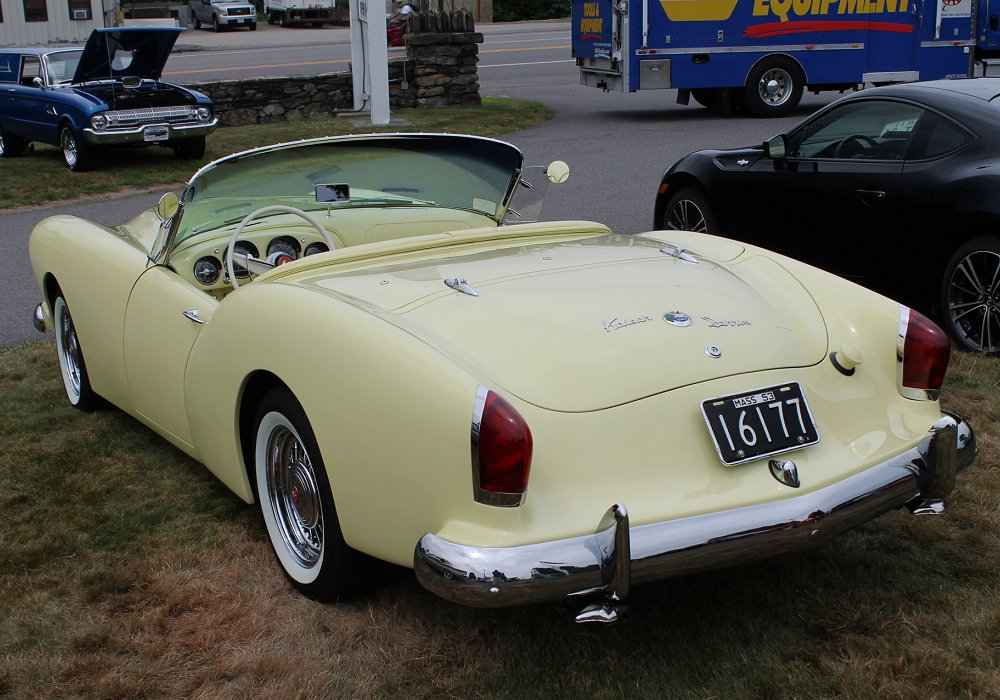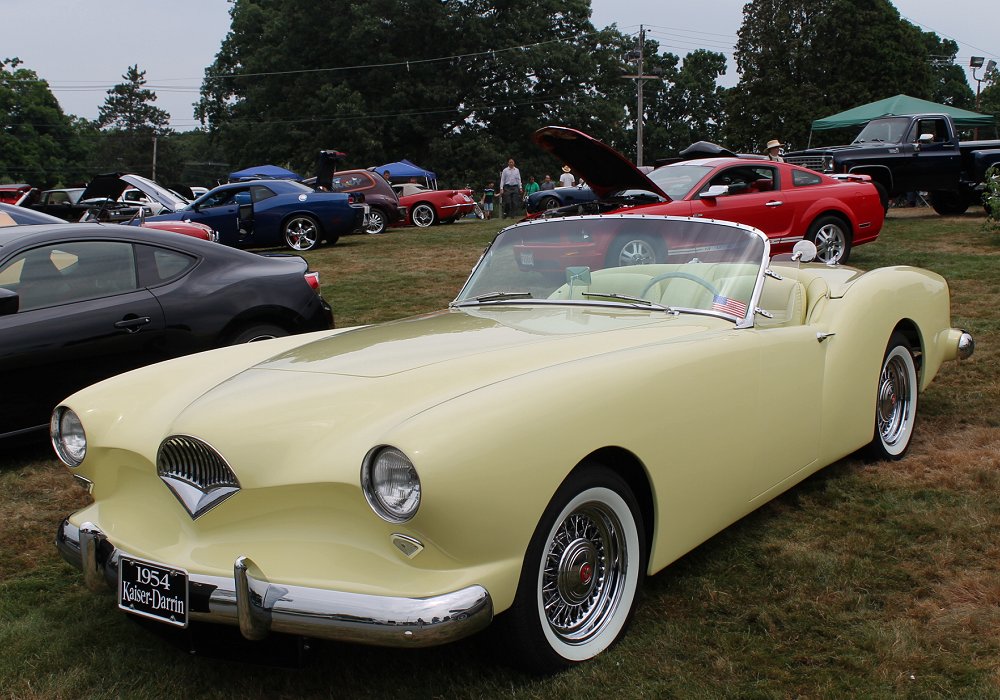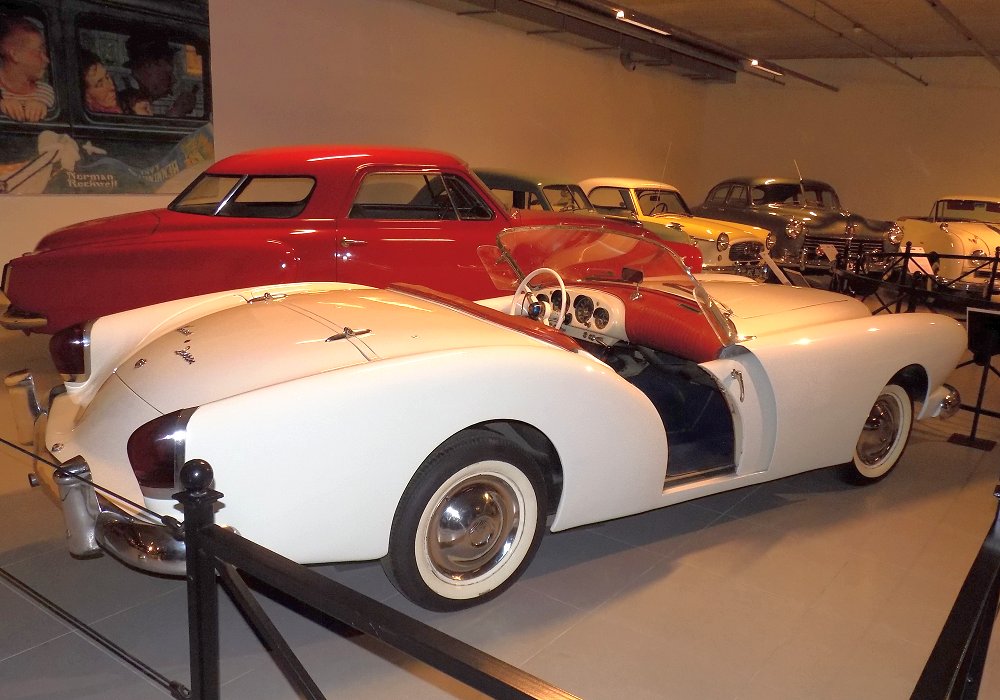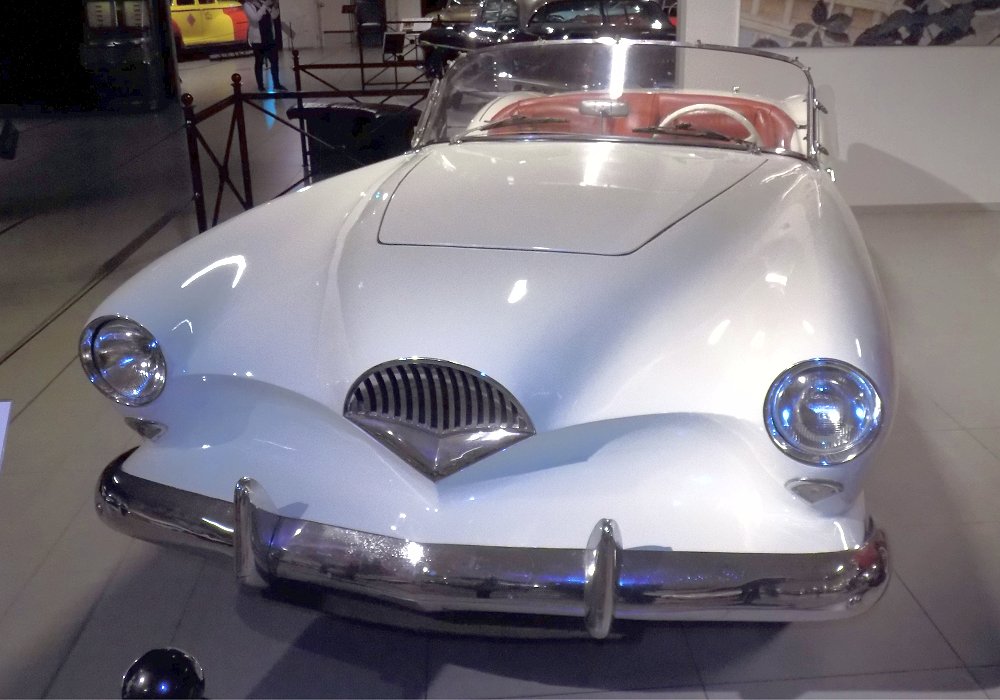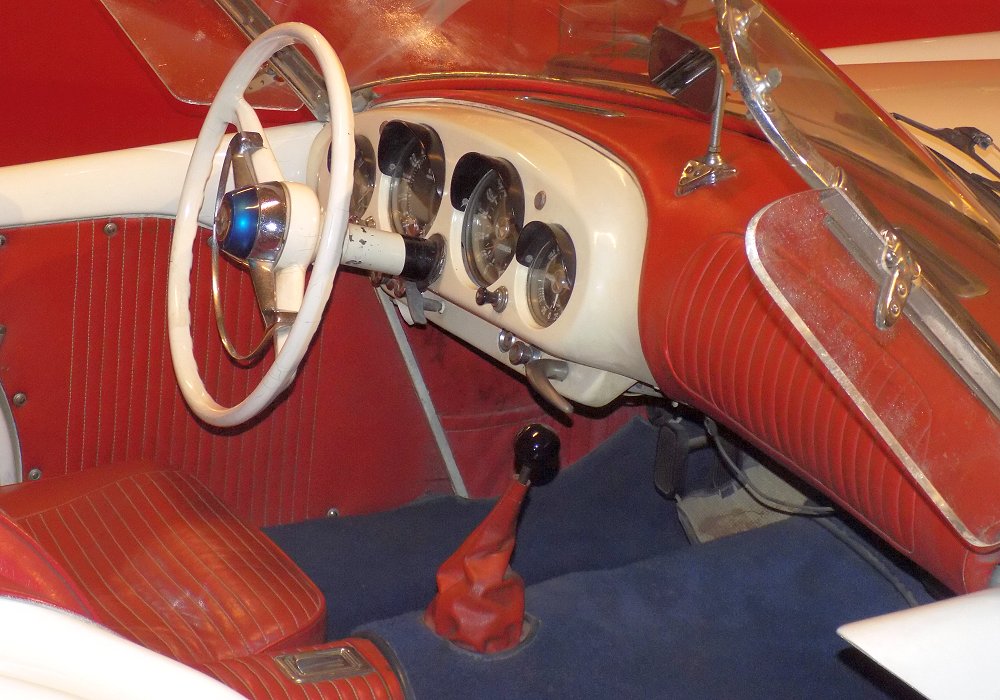Description
The Kaiser Darrin DKF 161 was one of the most remarkable and visionary American sports cars of the 1950s—a striking blend of artistry, innovation, and individuality. Produced in 1954 by Kaiser Motors, it was the first American production car to feature a fiberglass body and one of the earliest postwar attempts to create a truly stylish, European-inspired roadster for the U.S. market. Designed by the legendary stylist Howard “Dutch” Darrin, the DKF 161 was a car of elegance and imagination that embodied the optimism and daring spirit of its era.
The Darrin was conceived at a time when America was rediscovering its enthusiasm for sports cars. The war had exposed U.S. servicemen to nimble European machines from MG, Jaguar, and Alfa Romeo, sparking new demand for light, stylish roadsters. Kaiser Motors—an independent automaker known for its progressive sedans—saw an opportunity to join this emerging market. Dutch Darrin, already famous for his work designing coachbuilt cars for Packard, Cadillac, and Kaiser itself, presented the company with a prototype that would become the DKF 161. Henry J. Kaiser was initially skeptical, but his wife, Alyce Kaiser, reportedly persuaded him that the design’s beauty and potential appeal were too great to ignore.
The production version, officially designated the Kaiser Darrin DKF 161, was introduced in 1953 and went on sale in early 1954. It was a low-slung, two-seat roadster with flowing, sculptural lines that set it apart from any other American car of its time. The most distinctive feature was its innovative sliding doors, which disappeared into the front fenders rather than swinging outward. This ingenious mechanism not only saved space but also added an element of theatricality every time the driver or passenger entered the car.
Underneath its elegant body, the Darrin was based on the compact chassis of the Henry J, modified and strengthened to suit its new role. The DKF 161 designation referred to the drivetrain—“DKF” standing for “Darrin Kaiser-Frazer” and “161” denoting the 161 cubic inch (2.6-litre) Willys Hurricane F-head inline-six engine under the hood. This reliable six-cylinder unit produced around 90 horsepower and was paired with a three-speed manual gearbox, often equipped with overdrive. Though modest in output by modern standards, it gave the lightweight fiberglass-bodied car respectable performance, with a top speed near 100 miles per hour and lively acceleration for its day.
The chassis employed a 100-inch wheelbase, with independent front suspension using coil springs and a solid rear axle on leaf springs. Hydraulic drum brakes provided predictable stopping power, and the steering was quick and precise. The car’s low weight and balanced proportions gave it excellent handling characteristics, particularly on winding roads where its agility and low center of gravity came into play. It was not a raw sports racer like a Jaguar XK120, but rather a refined grand touring car—graceful, relaxed, and eminently stylish.
The design of the Kaiser Darrin was its crowning glory. The long, sculpted front fenders flowed smoothly into the doors, which in turn blended into the curving rear haunches. The front end featured a distinctive “Darrin dip” in the grille—a signature flourish of the designer—flanked by deeply recessed headlights. The hood was long and narrow, emphasizing the car’s proportions, while the low, sloping windshield and cut-down doors added to its sporting elegance. The body was made entirely of fiberglass, making the Darrin one of the very first American cars to use the material, alongside the Chevrolet Corvette. Its construction allowed for complex shapes and curves that would have been difficult to achieve in steel.
Inside, the Darrin’s cabin reflected the same blend of simplicity and sophistication. The dashboard featured a symmetrical layout with round, clearly marked gauges, and the seats were upholstered in high-quality leather or vinyl, often in contrasting colors to the bodywork. The steering wheel was large and elegant, and the interior trim echoed the car’s European inspiration. Though the cockpit was compact, it offered a comfortable driving position and excellent visibility thanks to the thin windshield pillars and low scuttle line.
Driving the Darrin was an experience that combined smoothness with a sense of occasion. The F-head six was torquey and dependable, delivering its power through a steady surge rather than brute force. The manual transmission shifted cleanly, and with the overdrive engaged, the car could cruise effortlessly at highway speeds. Its handling was light and predictable, with responsive steering and well-controlled body roll. The sliding doors, while unconventional, proved surprisingly practical in tight parking spaces and added a touch of flair that no other sports car could match.
Despite its beauty and innovation, the Kaiser Darrin’s timing was unfortunate. By the time it reached production in 1954, Kaiser Motors was already struggling financially. Its price—around $3,700—was high for a small sports car, especially when the Chevrolet Corvette and Ford Thunderbird offered more power and stronger brand recognition. Only 435 examples of the Darrin were produced before Kaiser ceased automobile production later that year, making it one of the rarest and most collectible American sports cars ever built.
Dutch Darrin himself was fiercely proud of his creation. After Kaiser’s withdrawal from the car business, he personally bought unsold Darrin chassis and modified some with supercharged or V8 engines, selling them privately to enthusiasts who appreciated the car’s unique design and character. These later versions only added to the legend of the DKF 161.
Today, the Kaiser Darrin DKF 161 stands as an icon of postwar American automotive design—a car that dared to be different in every respect. Its sliding doors, fiberglass body, and sensuous styling marked it as a car ahead of its time. Collectors prize it not only for its rarity but for its artistry and innovation.
The Darrin remains a testament to the creative spirit of Dutch Darrin and the adventurous ambition of Kaiser Motors. It was more than a car; it was a sculptural expression of optimism, grace, and ingenuity. In an age defined by conformity, the Kaiser Darrin DKF 161 stood apart—a true original that proved beauty and imagination could still triumph, even in the most uncertain times of the American automobile industry.

